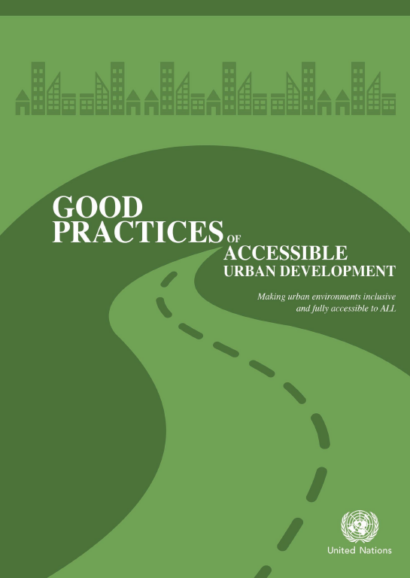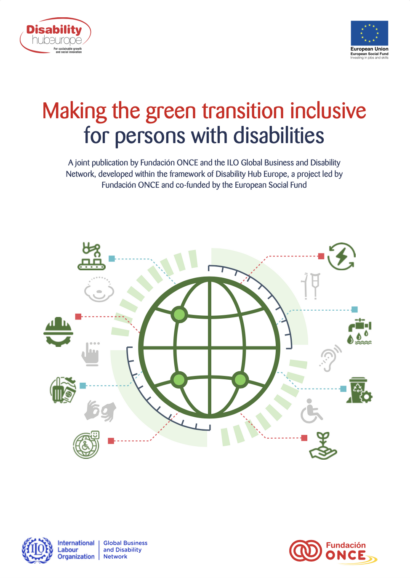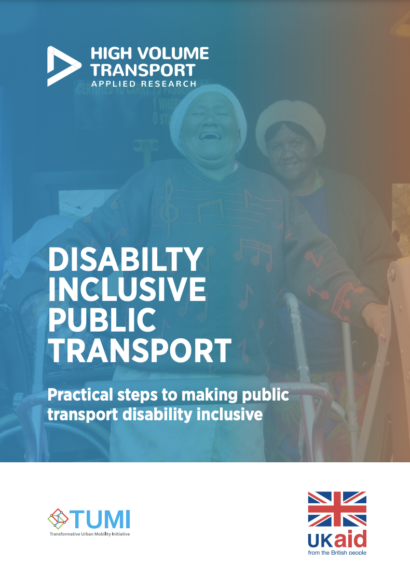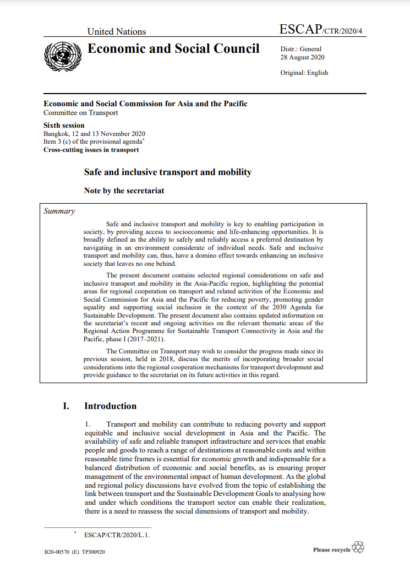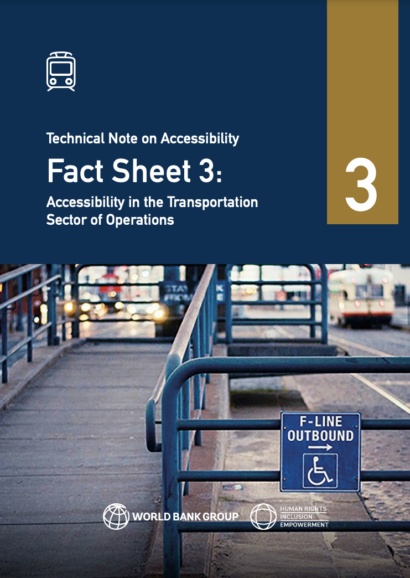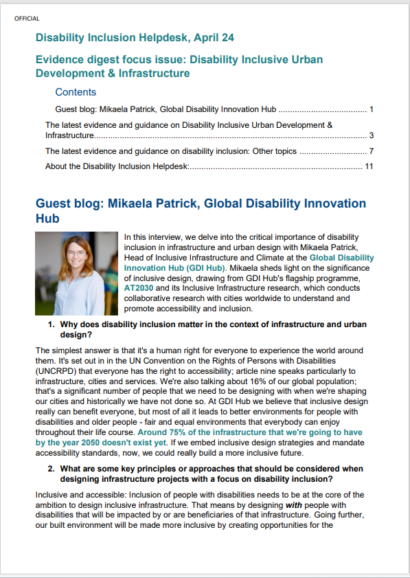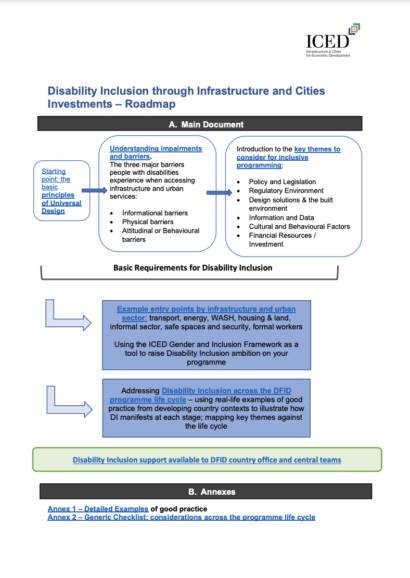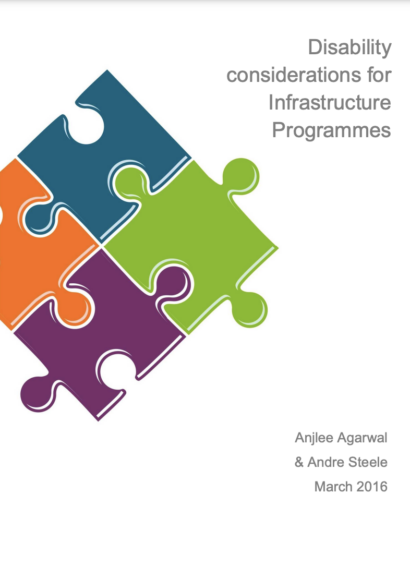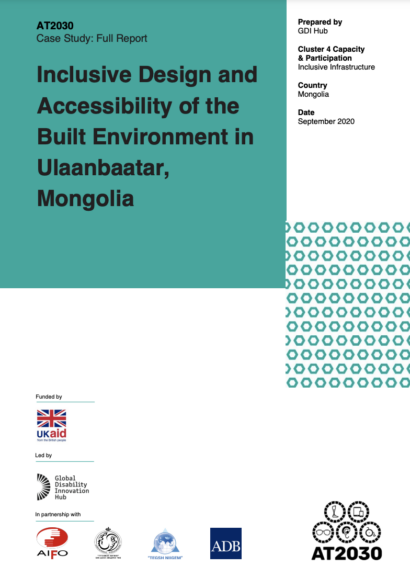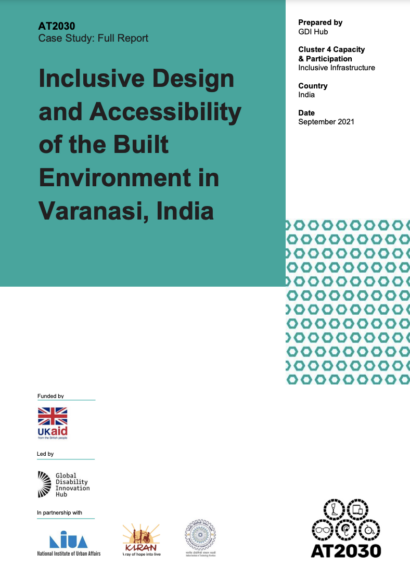Whitzman C, James K and Powaseu I (2013) Travelling together: Improving the access of people with disability to road infrastructure in Papua New Guinea
This research policy brief is informed by the results of a participatory research project into access to road infrastructure by people with disabilities in Papua New Guinea.
Pacific Region Infrastructure Facility (PRIF) (2016) Improving Accessibility in Transport: Infrastructure Projects in the Pacific Islands
This resource provides an assessment of the situation in the Pacific islands region in regards to the accessibility of transport, including air, maritime and road transportation.
RDI Network (2020) Building Together: Seven principles for engaging civil society to deliver resilient, inclusive and sustainable infrastructure in the Pacific islands
This paper presents guidelines for policymakers in the Pacific region to collaborate with civil society and private sector in creating infrastructure projects that are resilient, inclusive, and sustainable.
UNDESA (2016) Good Practices of Accessible Urban Development
This publication calls for more initiatives and concrete actions from both developing and developed countries in advancing urban development to be accessible and inclusive to all, including people with disabilities.
Disability Hub Europe (2023) Involving people with disabilities in addressing energy poverty: a just transition
This post explores the reasons why it's crucial to involve people with disabilities when addressing energy poverty.
Disability Hub Europe & ILO (2023) Making the green transition inclusive for persons with disabilities
Persons with disabilities face unique challenges in the context of climate change.
Transformative Urban Mobility Initiative (2019) Disability Inclusive Public Transport: Practical steps to making public transport disability inclusive
This Policy Brief is a timely response to the growing demand for sound policy advice and practical toolkits.
ESCAP (2020) Safe and inclusive transport and mobility
The document contains selected regional considerations on safe and inclusive transport and mobility in the Asia-Pacific region.
World Bank (2022) Technical Note on Accessibility – Fact Sheet 3: Accessibility in the Transportation Sector of Operations
Ensuring that infrastructure and transport development considers and meets the needs of persons with disabilities is of critical importance.
World Bank (2012) Accessibility of urban transport for people with disabilities and limited mobility: lessons from East Asia and the Pacific
This note summarizes the analysis done of the accessibility features of recent transport projects in the East Asia and Pacific (EAP) region.
UNOPS (2022) Inclusive Infrastructure for Climate Action
This publication focuses on the importance of developing an inclusive approach to infrastructure, while addressing the urgent issues of climate action.
Inclusive Futures (2024) Evidence digest focus issue: Disability Inclusive Urban Development & Infrastructure
A guest blog with Mikaela Patrick, Global Disability Innovation Hub; the latest evidence and guidance on Disability Inclusive Urban Development & Infrastructure; and the latest evidence and guidance on disability inclusion.
UNDESA (2018) UN Flagship Report on Disability and Development (Infrastructure Chapter)
This report represents the first UN systemwide effort to examine disability and the Sustainable Development Goals (SDGs) of the 2030 Agenda for Sustainable Development at the global level.
ICED (2018) Briefing Note: Disability Inclusion through Infrastructure
This Briefing Note provides guidance on how to achieve greater disability inclusion (DI) through investments in infrastructure and cities.
Agarwal, A. & Steele, A. (2016) Disability considerations for infrastructure programmes
This rapid desk based study provides a reference document that identifies and summarises robust evidence of the impact of non-accessible infrastructure on people with disabilities.
CBM (2016) Disability Inclusive Eye Health in Sierra Leone
This case study provides an example of an eye hospital program that completed low-cost renovations to become more accessible for people with disabilities, particularly those who are blind or have low vision.
The World Bank (2017) Improving Access and Disaster Preparedness for Persons with Disabilities in Samoa
This case study is an example of how an infrastructure investment in Samoa funded by the World Bank and Government of Australia is improving the accessibility of roads for people with disabilities.
Global Disability Innovation Hub (2020) Inclusive Design and Accessibility of the Built Environment in Ulaanbaatar, Mongolia
This is a case study on the state of accessibility and inclusion in the built environment in Ulaanbaatar, Mongolia.
Global Disability Innovation Hub (2021) Inclusive Design and Accessibility of the Built Environment in Varanasi, India
This case study explores the state of inclusive and accessible environments for people with disabilities in Varanasi, India, through engagement with policy, industry and community stakeholders (policy, practice and people).
Whitzman C, James K and Powaseu I (2013) Travelling Together: Disability Inclusive Road Development in Papua New Guinea
Research findings can be used to inform guidelines for road and transport infrastructure planners and implementers on how to include people with disability and better understand their needs as road users; and by people with disability and Disabled Persons Organisations (DPOs) to inform advocacy and advice regarding disability inclusion.
UNDESA (2016) Good Practices of Accessible Urban Development
This is a collection of case studies from different geographical regions which illustrate what good practice in promoting accessibility and the inclusion of people with disabilities in various urban development contexts.
UNDESA (2018) Disability and Development Report
Chapter II, Section G of this report explores SDG 7 and the situation and disproportionate impacts for people with disabilities related to the lack of access to energy.




